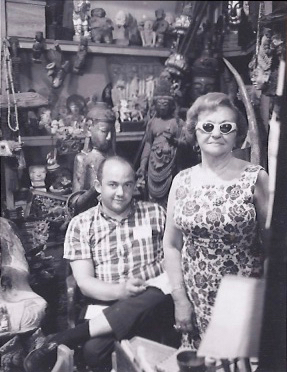About Rudi
This is the page description.
About rudi
Swami Rudrananda (Rudi) was born Albert Rudolph in New York City in 1928, the beginning of the Depression. His family lived in Brooklyn in impoverished conditions. Abandoned by his father, Rudi and his mother and two brothers worked long hours for many years just to make a subsistence living. Rudi had to quit high school to work. His first job was in a pocketbook factory.
From a very early age, Rudi felt a special calling toward spirituality. He often talked about his childhood spiritual experiences, and he wrote about them in his book, Spiritual Cannibalism. In the early stages of his life, he had visions of Tibetan masters who gave him instruction. These experiences also shaped his later life. He had a great affinity for art and was one of the first people to become involved in importing Tibetan art into this country and promoting its collection and study.
Rudi joined the Army at age 18. He became an instructor for the government teaching ROTC at the University of Washington in Seattle. Rudi began formally exploring spirituality around this time, going to lectures and speaking with people who had spiritual experiences. He began to develop an interest in Asian art, started collecting objects, and read many books about Tibet and China.
Rudi served in the Army for 18 months. Upon his discharge from the Army, he returned to his job at the textile company where he attended night school, earned his diploma, and went to North Carolina State College. He received a degree in textile engineering. He planned to stay in the South after he graduated, but his mother became ill and he needed to return to New York. He became an engineering trainee in a textile company, but struggled with the work he was assigned and was eventually laid off. Soon after, he opened his first Asian art store in a small shop on Seventh Avenue in Greenwich Village. He began his business with a few hundred dollars he had and a small collection of sculptures he had accumulated.
After leaving college, Rudi studied at the Gurdjieff Institute in New York City for five years.
In 1958, Rudi met Swami Bharati Krishna Tirtha, the Shankaracharya of Puri, to whom Rudi attributed the beginning of his spiritual awakening. Rudi served as the Shankaracharya's attendant for several months during his visit to the United States.
Rudi met Bhagavan Nityananda in Ganeshpuri, India, in 1958 and studied with him until Nityananda passed away in 1961. Rudi had a profound experience with Nityananda--one that altered the course of his life. He became more deeply dedicated to his inner growth and to his spiritual practice. He returned to New York and began teaching eyes open meditation, first to individual students and then in a group setting he called class.
After Bhagavan Nityananda's death, Rudi became a student of Swami Muktananda. In 1966, Swami Muktananda initiated him into the Saraswati Order of monks, making him one of the first Americans to be recognized as a Swami or master in this tradition. Rudi was given the name Swami Rudrananda, meaning "the fiery bliss of Rudra."
Rudi with his mother, Rae, in his first store.
By 1967, Rudi's art business had expanded as he cultivated his international network of art suppliers, collectors and distributors. He moved his store to a larger location in 1968. That autumn, he began looking for a location to establish an ashram. He found a small resort in the town of Big Indian, New York, in the Catskills, which he purchased and named Shree Gurudev Rudrananda Yoga Ashram.
Rudi arranged for Muktanananda to visit the United States for the first time in 1970. Muktananda spent two months at Big Indian with Rudi, and then Rudi escorted him on tour to Texas and California.
By the end of 1972, Rudi had established fourteen ashrams in the United States and three in Europe. His Manhattan store housed one of the largest Asian art collections in the world. His circle of friends included luminaries from many parts of Manhattan society--artists, actors, restauranteurs, politicians, musicians and writers.
For all his immersion in the art and spirituality of Asia, Rudi was a product of Western civilization. He recognized the need for a serious student of spiritual work to be able to function effectively in society. He demanded that his students be able to work a regular schedule and support themselves. Setting himself as an example, he worked at his Asian art store, Rudi's Oriental Antiques, for twenty years, six days a week.
Rudi's book, Spiritual Cannibalism, was published in early 1973. He died on February 21, 1973, shortly after his 45th birthday, in a small plane crash on his way to Big Indian. Upon his death, his senior student and designated successor Michael Shoemaker assumed responsibility for the Rudrananda ashrams.
Rudi was a powerful fusion of East and West, dedicated only to spiritual growth and transcendence. Rudi attempted to provide those truly seeking to fulfill their spiritual potential with the insight necessary to discriminate between the content and the container of any teaching.






